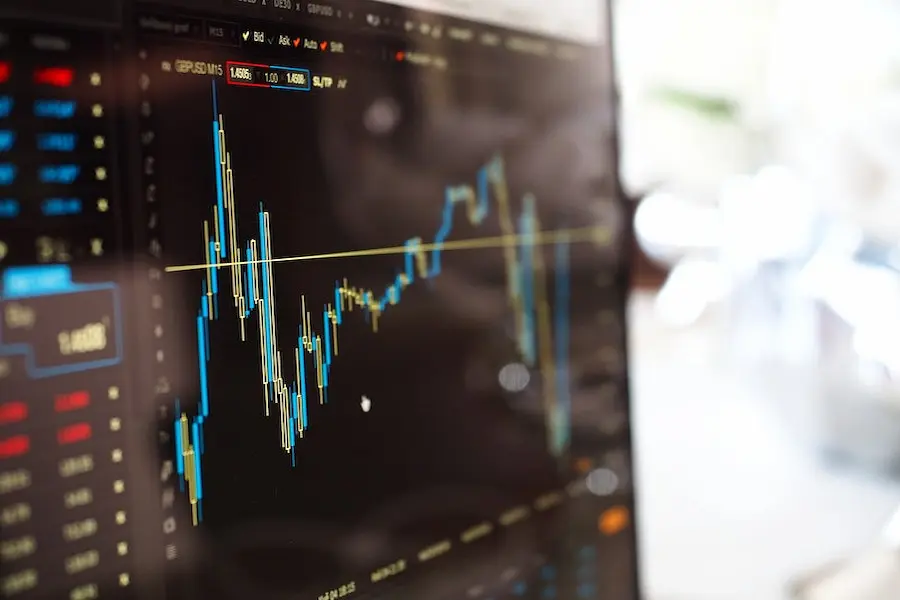Introduction: The Need for Speed in Trading
In the fast-paced world of trading, making decisions quickly and effectively is crucial. Have you ever wondered how some traders manage to execute orders in fractions of a second? The secret is trade automation. With the increasing shift towards digital solutions, automated trading systems are no longer just for professional traders. They are for anyone looking to streamline their strategies and maximize profits.
Whether you’re just starting out or have been trading for years, automation has become a game-changer. It’s not just about speed it’s about improving accuracy, reducing human error, and staying ahead in an increasingly competitive market.
From the emotional stresses of trading to the technical intricacies of algorithms, automation is transforming the way we approach the financial markets. Let’s dive into the world of trade automation, explore how it works, its key benefits, and how you can get started today.
What is Trade Automation?
Trade automation refers to the use of software and algorithms to automatically execute trades based on predefined conditions. By removing human intervention, trade automation speeds up the decision-making process, reduces emotional biases, and allows traders to capitalize on opportunities instantly.
For example, an automated system might be programmed to buy a stock when its price drops by 5% or sell when a specific technical indicator is triggered. These systems act faster than humans, ensuring that no profitable opportunities are missed.
Automation tools can be found in various forms, including:
Algorithmic Trading: Uses complex mathematical models to decide the best times to buy or sell.
Trading Bots: Software programs that execute trades based on specific signals.
Trading Platforms: Predefined strategies that run continuously, analyzing market data and executing trades.
How Does Trade Automation Work?
Trade automation is powered by algorithmic trading systems, which use market data to execute trades based on predefined rules. Here’s a closer look at how it functions:
Data Collection: The system monitors live market data, such as price movements, volume, and news.
Decision-Making: Algorithms analyze this data to identify patterns that align with the trader’s strategy.
Trade Execution: When the conditions are met, the system executes the trade, without human intervention.
Continuous Optimization: The system learns from its performance and makes adjustments over time to improve its predictions.
Key Benefits of Trade Automation
1. Increased Speed
Automated systems can execute trades in fractions of a second, ensuring that opportunities are seized before they are noticed by other traders. In markets where every second counts, this speed can provide a significant edge.
2. Consistency
Automation removes emotional biases from trading. Automated systems stick to the rules, executing strategies without being swayed by market fluctuations or psychological factors like fear and greed.
3. Reduced Costs
By automating repetitive tasks, traders can save time and focus on more complex strategies, which can result in reduced operational costs and better returns.
4. 24/7 Operation
Unlike human traders who need rest, automated systems can work around the clock, making them ideal for global markets that never close. Whether it’s late-night trading or during the weekend, automation ensures you’re never missing an opportunity.
5. Backtesting
One of the strongest advantages of trade automation is the ability to backtest strategies using historical data. Traders can simulate how a strategy would have performed under various market conditions, ensuring it’s ready for live trading.
Popular Automated Trading Platforms for 2025
Several platforms offer powerful automation tools to traders of all experience levels. Some of the most popular platforms include:
ProRealTime: Known for both no-code and coding options, making it accessible to both beginners and experienced traders.
MetaTrader (MT4/MT5): A widely used platform that allows traders to create custom automated strategies using MQL programming.
TradingView: Provides powerful charting tools and integrates with other platforms via alerts and APIs for trade execution.
TrendSpider: Uses AI-driven analysis tools to identify patterns and optimize trades. Great for traders looking for machine learning-based automation.
The Role of AI and Machine Learning in Trade Automation
AI is revolutionizing trade automation by making it possible for systems to adapt and improve over time. By analyzing vast amounts of market data and learning from past trades, AI-powered systems can enhance decision-making, predict market trends, and optimize trading strategies.
For example, AI can analyze historical price data, economic reports, and even social media sentiment to anticipate market shifts, providing traders with an edge in making more accurate predictions.
AI-Powered Strategies:
Predicting market behavior using machine learning models.
Enhancing decision-making by analyzing social media sentiment.
Adapting strategies in real-time based on new data.
How to Get Started with Trade Automation
Getting started with trade automation doesn’t have to be complicated. Here’s a step-by-step guide to help you launch your first automated strategy:
Understand Your Goals: Define what you want to achieve with automation whether it’s speed, accuracy, or minimizing errors.
Choose the Right Platform: Select a platform that matches your technical skills. Beginners can start with user-friendly options like MetaTrader 4/5, while advanced traders might opt for platforms like AlgoTrader for custom strategies.
Develop or Select a Strategy: You can either use pre-built strategies or create your own. Make sure your strategy aligns with your goals and risk tolerance.
Backtest: Use historical data to test your strategy before going live. This ensures it will perform well under different market conditions.
Set Up Risk Management: Define stop-loss and take-profit levels to protect your investments.
Start with a Demo Account: Before using real money, test your automation system in a demo account.
Go Live and Monitor: Once confident, take your strategy live but keep monitoring to ensure everything runs smoothly.
Future Trends in Trade Automation
Trade automation is constantly evolving. Here are some trends that are shaping its future:
AI-Driven Trading: The integration of AI will allow for even more precise predictions and smarter decision-making.
Rise of DeFi (Decentralized Finance): Blockchain technology and smart contracts will lead to more secure and transparent automated trading systems.
Increased Regulation: As the market for automated trading grows, regulations will become more stringent to prevent manipulation and ensure fairness.
Conclusion: Future-Proofing Your Trading with Automation
Trade automation is no longer a niche tool it’s an essential part of modern trading strategies. With the ability to execute trades faster, more accurately, and without emotional bias, automation is transforming how we approach financial markets.
Whether you are new to trading or an experienced professional, incorporating automated systems into your workflow can give you a competitive edge. The future of trading is undoubtedly smarter, faster, and more efficient and trade automation is the key to unlocking that future.
Read Also:Fortnite Refund Guide: How to Get Your V-Bucks Back 2025 Tips and Tricks
FAQs
What is trade automation?
Trade automation uses software to automatically execute trades based on predefined conditions, enabling faster, more efficient trading without human intervention.
How does AI enhance trade automation?
AI improves trade automation by analyzing large datasets and adapting to new information, which allows systems to make more accurate predictions and improve decision-making over time.
Can I automate cryptocurrency trading?
Yes, many platforms offer automated trading specifically designed for cryptocurrencies, using blockchain technology to ensure secure transactions.
What platforms support trade automation?
Popular platforms like ProRealTime, MetaTrader, TradingView, and TrendSpider provide various tools for automating trading strategies.
How do I backtest automated strategies?
Platforms like ProRealTime and MetaTrader offer backtesting features, allowing traders to simulate past market conditions and evaluate the effectiveness of their strategies before going live.

